You are here
Wwii 1945 Battle Of Manila Army Pacific Map Made From Captured Japanese Map 1
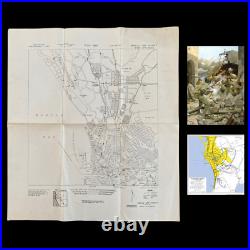
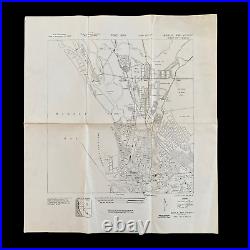
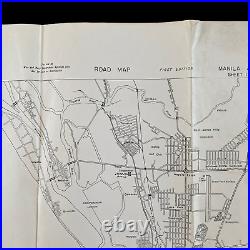
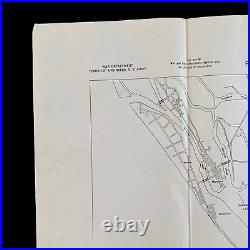
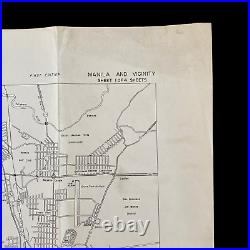
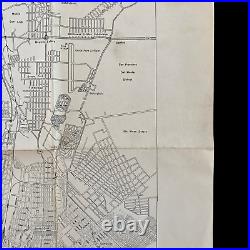
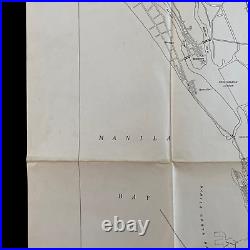
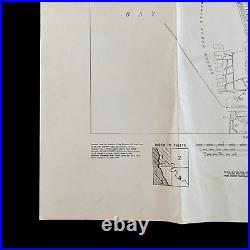
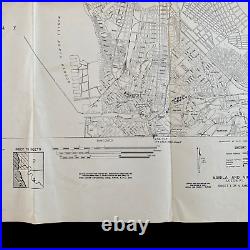
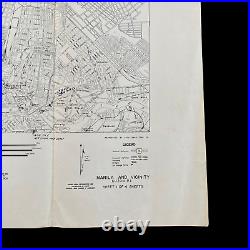
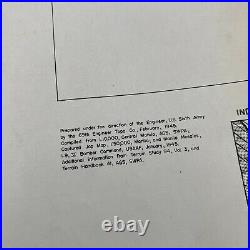
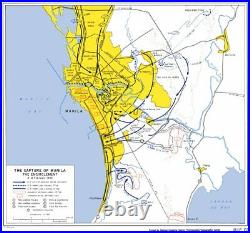


NEAR MINT CONDITION WITH SOLDIER ANNOTATIONS. This rare Invasion of Luzon'FIRST EDITION' theater-printed map has a very interesting history as it was created from a'CAPTURED JAP MAP' and'AERIAL MANILA MOSAIC RECONNASISNCE OF V BOMBER COMMAND'. Army War Department Pacific Theater map was printed in February 1945. This map is'SHEET 1 of 4' and shows the sounding area of Manila and includes Manila Bay.
The battle left 1,010 U. Soldiers dead and 5,565 wounded. An estimated 100,000 to 240,000 Filipinos civilians were killed, both deliberately by the Japanese in the Manila massacre and from artillery and aerial bombardment by U. 16,665 Japanese dead were counted within Intramuros alone.
Liberation of Manila marked the incredible return of General Douglas MacArthur to the Philippines from the infantry D-Day landing beaches in the Lingayen Gulf all the way to the capital city of Manila (the ultimate objective of the amphibious assault landing in Luzon). After landing at San Fabian on 27 January, the 1st Cavalry Division, under the command of Major Gen. Mudge, was ordered by MacArthur on 31 January, to Get to Manila! Free the internees at Santo Tomas. Take Malacanang Palace and the Legislative Building.
As the Americans converged on Manila from different directions, they found that most of the Imperial Japanese Army troops defending the city had been withdrawn to Baguio, on the orders of General Tomoyuki Yamashita, commander in chief of Japanese Army forces in the Philippines. Yamashita planned to engage Filipino and U. He had three main groups under his command: 80,000 men of the Shimbu Group in the mountains east of Manila, 30,000 of the Kembu Group in the hills north of Manila, and 152,000 in the Shobu Group in northeastern Luzon. On 3 February, elements of the 1st Cavalry Division under Maj. Mudge pushed into the northern outskirts of Manila and seized a vital bridge across the Tullahan River, which separated them from the city proper, and quickly captured Malacanang Palace. Chase's 8th Cavalry, the first unit to arrive in the city, began a drive toward the sprawling campus of the University of Santo Tomas, which had been turned into the Santo Tomas Internment Camp for civilians and the US Army and Navy nurses sometimes known as the "Angels of Bataan". Since 4 January 1942, a total of thirty-seven months, the university's main building had been used to hold civilians. Out of 4,255 prisoners, 466 died in captivity, three were killed while attempting to escape on 15 February 1942, and one made a successful breakout in early January 1945. Manuel Colayco, a USAFFE guerrilla officer, became an allied casualty of the city's liberation, after he and his companion, Lt. Diosdado Guytingco, guided the American First Cavalry to the front gate of Santo Tomas. Struck by Japanese bullets, Colayco died seven days later in Legarda Elementary School, which became a field hospital. The Japanese, commanded by Lt.
It was fought by forces from both the United States and the Philippines against Japanese troops in Manila, the capital city of the Philippines. The month-long battle resulted in the death of over 100,000 civilians and the complete devastation of the city was the scene of the worst urban fighting in the Pacific theater. Manila became one of the most devastated capital cities during the entire war, alongside Berlin and Warsaw. The city's capture was marked as General Douglas MacArthur's key to victory in the campaign of reconquest. To date, it is the last of the many battles fought within Manila's history. This item is in the category "Collectibles\Militaria\WW II (1939-45)\Original Period Items\United States\Field Gear, Equipment". The seller is "premierrelics" and is located in this country: US. This item can be shipped worldwide.
- Theme: Militaria
- Original/Reproduction: Original
- Conflict: WW II (1939-45)

